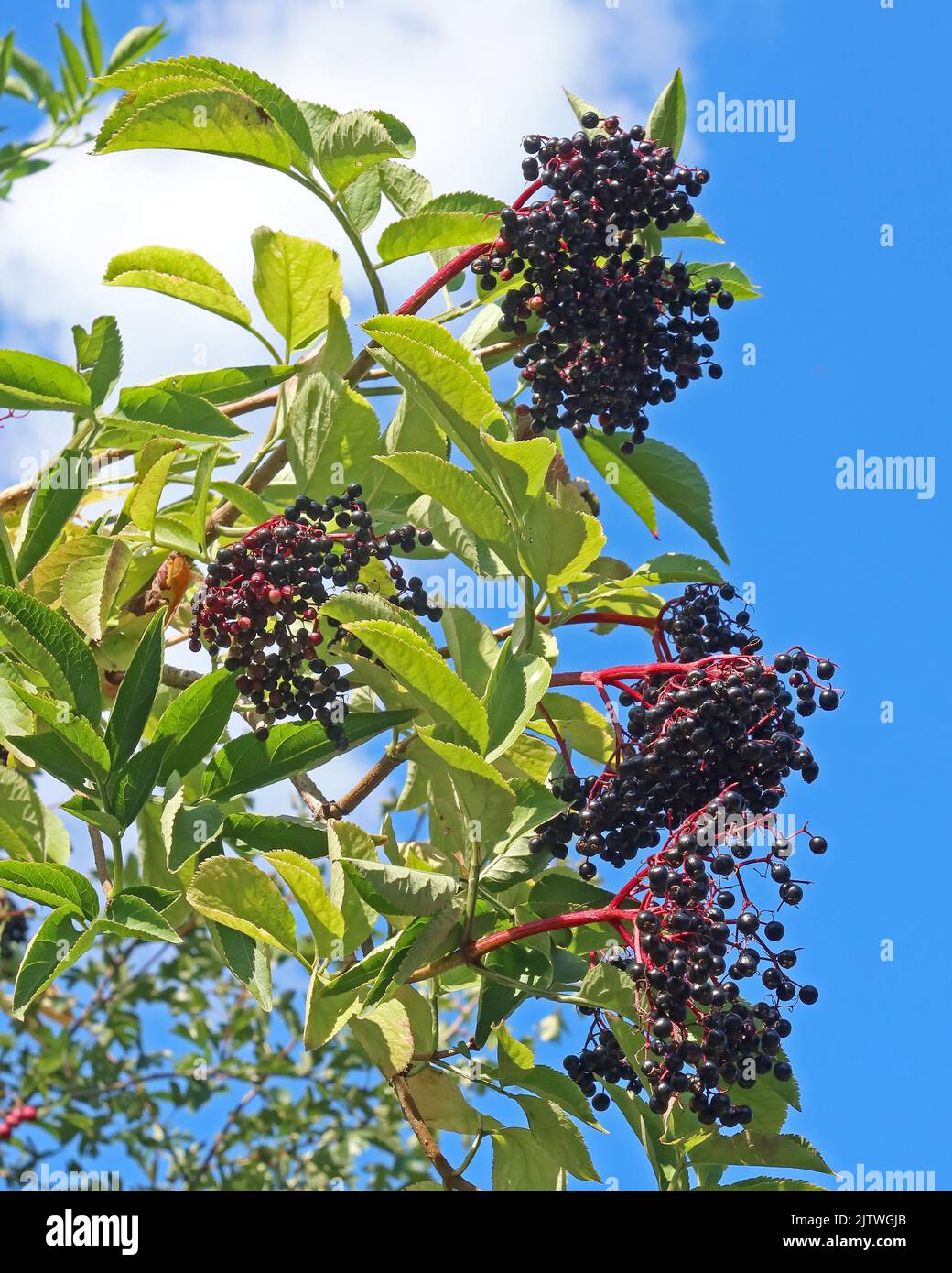Elderberry / Elderflower tree, late summer, Thelwall, Warrington, Cheshie, England, UK, WA4 WA4 2HY

Image details
Contributor:
Tony Smith / Alamy Stock PhotoImage ID:
2JTWGJBFile size:
36.6 MB (1.5 MB Compressed download)Releases:
Model - no | Property - noDo I need a release?Dimensions:
3200 x 4000 px | 27.1 x 33.9 cm | 10.7 x 13.3 inches | 300dpiDate taken:
1 September 2022Location:
Thelwall, Cheshire, England, UK, WA4 2HYMore information:
Sambucus is a genus of flowering plants in the family Adoxaceae. The various species are commonly referred to as elder, elderflower or elderberry. The genus was formerly placed in the honeysuckle family, Caprifoliaceae, but was reclassified as Adoxaceae due to genetic and morphological comparisons to plants in the genus Adoxa. Flowers of European black elder Description The oppositely arranged leaves are pinnate with 5–9 leaflets (or, rarely, 3 or 11). Each leaf is 5–30 cm (2–12 in) long, and the leaflets have serrated margins. They bear large clusters of small white or cream-colored flowers in late spring; these are followed by clusters of small black, blue-black, or red berries (rarely yellow or white). Color Structure of anthocyanins, the blue pigments in elderberries Sambucus fruit is rich in anthocyanidins[3] that combine to give elderberry juice an intense blue-purple coloration that turns reddish on dilution with water. These pigments are used as colorants in various products, and "elderberry juice color" is listed by the US FDA as allowable in certified organic food products. In Japan, elderberry juice is listed as an approved "natural color additive" under the Food and Sanitation Law. Fibers can be dyed with elderberry juice (using alum as a mordant) to give a "muted purple" shade. Toxicity Although the cooked berries (pulp and skin) of most species of Sambucus are edible, the uncooked berries and other parts of plants from this genus are poisonous. Leaves, twigs, branches, seeds, roots, flowers, and berries of Sambucus plants produce cyanogenic glycosides, which have toxic properties.[10] Ingesting a sufficient quantity of cyanogenic glycosides from berry juice, flower tea, or beverages made from fresh leaves, branches, and fruit has been shown to cause illness, including nausea, vomiting, abdominal cramps, diarrhea, and weakness. In August 1983, a group of 25 people in Monterey County, California, became ill after ingesting elderberry juice pressed f